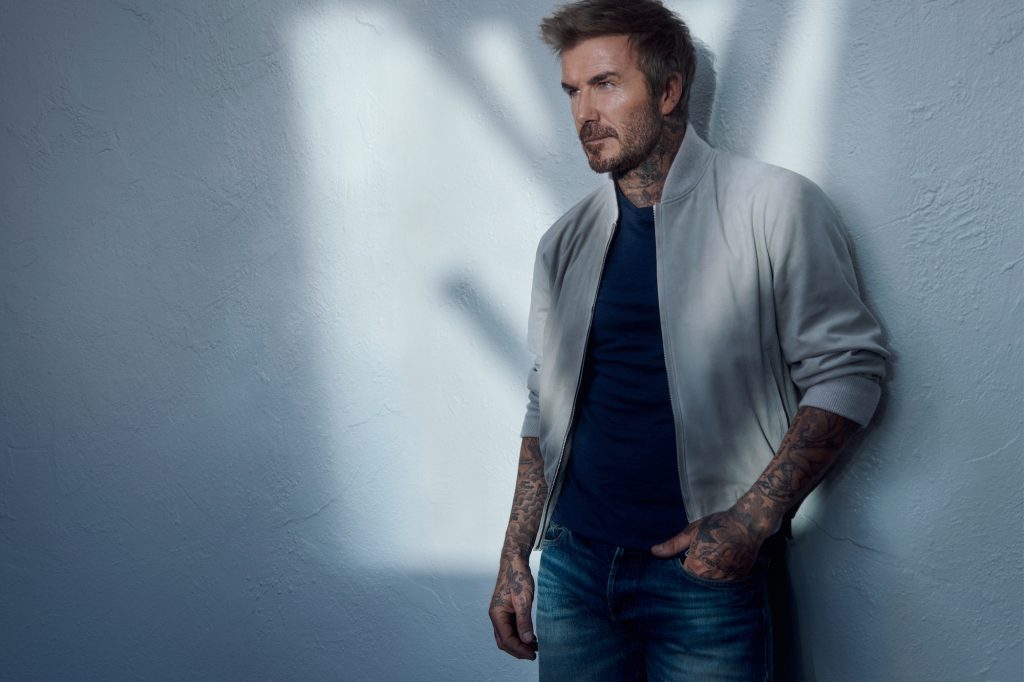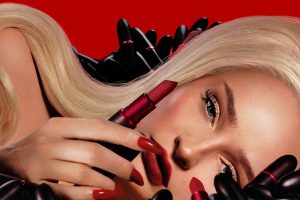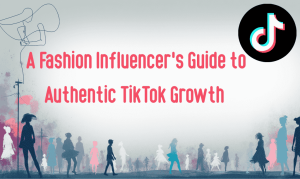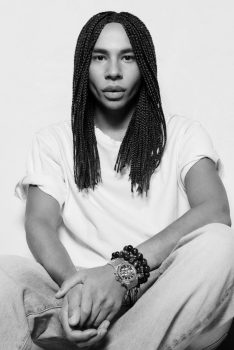As part of a global, multi-year design collaboration with David Beckham, BOSS introduces their first-ever collection designed by their team in collaboration with the football icon. The BECKHAM x BOSS Spring Summer 2025 collection is now available on boss.com, at BOSS stores worldwide, and select BOSS wholesalers.

Boss Introduces First Co-Designed Collection With David Beckham
Inspired by his personal style, Beckham brings his vision, impeccable taste, and expertise to the BOSS design team. Together, they have designed a timeless collection of premium elevated pieces that combine modern design and brand heritage.
“Our first BECKHAM x BOSS collection marks a significant milestone in our long-term strategic partnership and represents a unique moment in the history of our core brand”, says Daniel Grieder, CEO of HUGO BOSS. “We have been very much looking forward to this launch and are more than excited to see how these pieces are received by our end consumers. This collection is based on our strategic priority that product is key.”
Keeping the BOSS 24/7 mindset in focus, relaxed, easy silhouettes paired with rich textures set the tone for BECKHAM x BOSS Spring Summer 2025. The collection has jersey essentials, elevated knitwear and crisp shirting, through to tailoring for all occasions. Casual looks are underpinned by denim and wrapped up in versatile outerwear. And, accessories include a leather holdall, Chelsea boots, and a baker boy cap.

Boss Introduces First Co-Designed Collection With David Beckham
“I’ve always loved fashion and curating different looks, so having the opportunity to collaborate with BOSS on my own spring/summer collection has been a great experience. It’s allowed me to really get into the detail of the pieces and to create a wardrobe of looks that aim to be effortlessly stylish and suit a range of occasions,” says Beckham.
The collection has been captured by fashion photographer and director Lachlan Bailey and art-directed by the Team Laird agency. The launch will be supported by a 360-degree marketing campaign—featuring the largest advertising mural in Europe. A unique, 541 sq-m hand-painted depiction of the campaign’s hero image, overlaid with a moving projection, will bring this collaboration to life on Tabernacle Street in East London. The campaign will appear on billboards across the globe from Times Square to Piccadilly Circus, along with store window installations and pop-ups at BOSS stores, beginning April 23.
RELATED CONTENT
Hugo Boss Textile Reuse Subsidiary Eightyards Begins Operations
HUGO BOSS Rolls Out AI-Powered Content For Better Consumer Experience
HUGO BOSS in 2024
HUGO BOSS is one of the leading fashion and lifestyle companies in the premium segment. Two strong brands, BOSS and HUGO, differ in their aesthetic but meet the same high standards. The company, based in Metzingen, Germany posted a 2024 financial report stating, ‘HUGO BOSS showed a solid performance also in the third quarter, benefiting from the growing brand relevance of BOSS and HUGO built in recent years…In Group currency, revenues amounted to EUR 1,029 million in Q3 2024 slightly above the prior-year level.
The Group posted robust revenue improvements in brick-and-mortar wholesale and digital. Interestingly, the launch of the BOSS Fall Winter 2024 campaign in August 2024 marks the beginning of a partnership with David Beckham while BOSS Spring Summer 2025 unveiled at Milan Fashion Week is generating more than 40 million livestream views worldwide! What’s more, the new customer loyalty program “HUGO BOSS XP” is driving an increase in its member base.
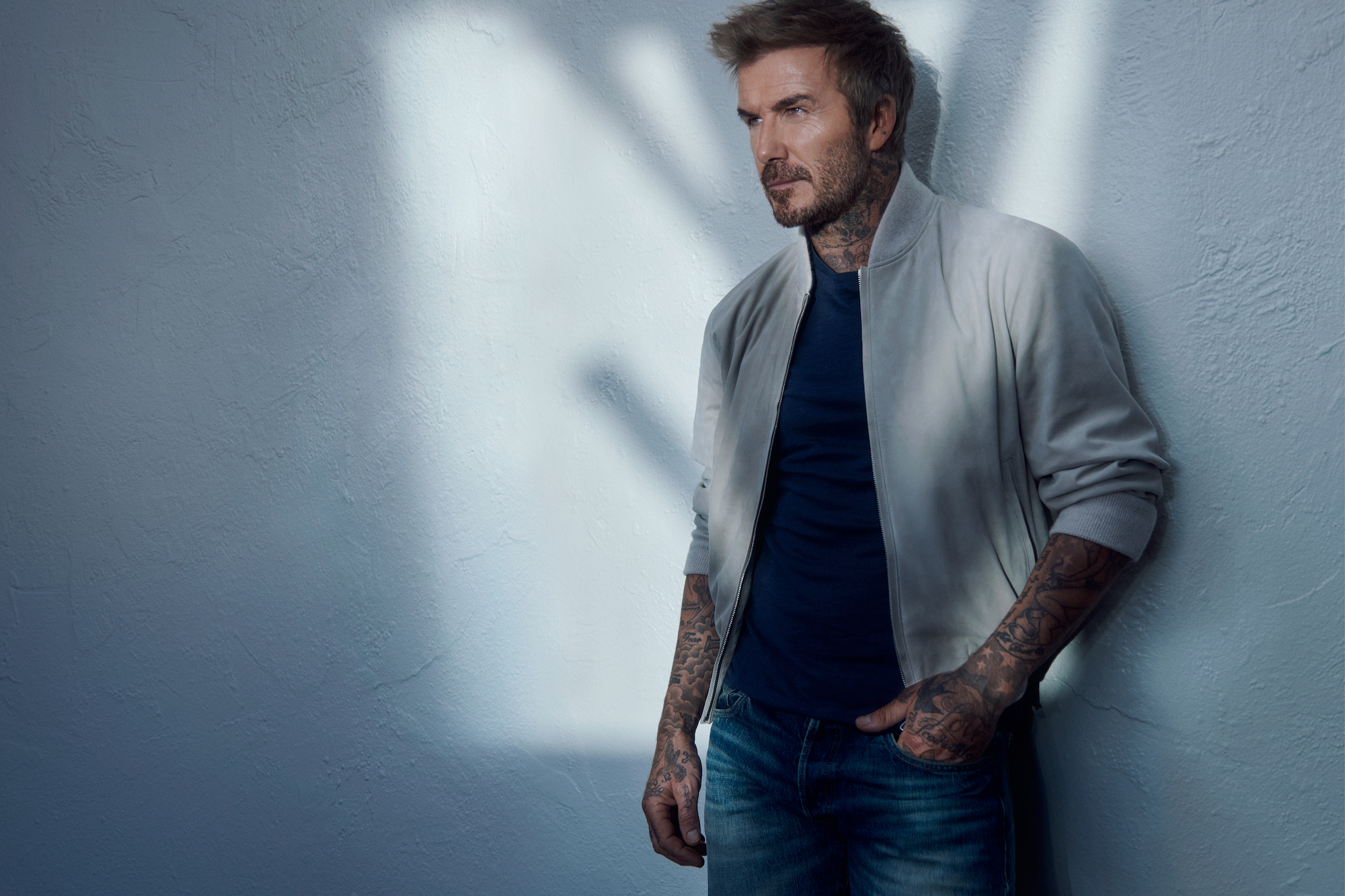
Boss Introduces First Co-Designed Collection With David Beckham
‘In the third quarter, HUGO BOSS achieved solid top-line improvements despite the ongoing weak consumer sentiment,’ said Daniel Grieder, CEO, HUGO BOSS. ‘Most importantly, and despite the volatile market backdrop, we have further enhanced the relevance of our brands, deepening customer engagement and continuing driving brand experiences and product offerings. In the third quarter we have also made important progress when it comes to improving cost efficiency. By further leveraging our global sourcing activities and rigorously executing our cost measures introduced earlier this year, we have improved productivity and effectiveness across our business, and supported our bottom-line development.’
History of HUGO BOSS
Hugo Ferdinand Boss – the youngest child of Heinrich and Luise Boss, who jointly owned a lingerie and linen shop in Swabian, was the heir to his parents’ shop. He began an apprenticeship as a merchant before enlisting in the army during World War I and later opened his clothing factory in 1924. During its first years the factory handmade garments including shirts for the National Socialist Party. Hugo F. Boss advertised his company during the mid-1930s as a “supplier of Party equipment since 1924.”

Hugo Boss
In 1929 the global economic crisis caused problems for the textile industry and by 1931 Hugo Boss’ factory was near- bankruptcy. That year Hugo F. Boss became a member of the National Socialist Party which placed orders for uniforms. Hugo Boss however took a long time to recover from the Great Depression. Post- 1938 the company received major commissions for army uniforms.
Hugo Boss grew during the Third Reich. Metzingen was occupied by Allied troops in April 1945 after which it became part of the French occupation. Hugo F. Boss was forced to undergo denazification, during which he was initially classified as “incriminated” and reportedly fined 100,000 reichsmarks. The reasons for this sentence included his early membership of the National Socialist Party, the fact that he benefited financially from National Socialism, and his friendship with Georg Rath, the local leader of the National Socialist Party. Hugo F. Boss appealed against the initial sentence and was ultimately classified as a “follower”.
When the war ended, the company manufactured uniforms for the French occupation forces and the Red Cross. Under the aegis of Hugo Boss’ son-in-law Eugen Holy, production expanded until the end of the Sixties. The company had already begun selling suits during the Fifties and by late Sixties, its sales had climbed to 3.5 million deutschmarks. In 1969 brothers Jochen and Uwe Holy took over the company and began evolving it into the global fashion brand it is today.
In 1984 Boss fragrances appeared and the company was listed on the Frankfurt Stock Exchange the following year. The brand began sponsorship of motorsports, golf and tennis. In 1989 Boss launched its first licensed sunglasses. After the Marzotto textile group acquired a 77.5 per cent stake in 1991 Hugo and Baldessarini brands were introduced. In 1995 the company launched footwear.
Daniel Grieder joined the HUGO BOSS AG Managing Board as CEO in 2021. Per a company release, he explains the brand’s transformative vision: “With the branding refresh and the release of the star-studded campaigns we are ushering in an entirely new era for BOSS and HUGO. It is our aim to excite new and younger target groups and turn them into fans of our brands. Both campaigns are therefore an important step in further boosting brand relevance.”
Jasmeen Dugal is Associate Editor at FashionABC, contributing her insights on fashion, technology, and sustainability. She brings with herself more than two decades of editorial experience, working for national newspapers and luxury magazines in India.
Jasmeen Dugal has worked with exchange4media as a senior writer contributing articles on the country’s advertising and marketing movements, and then with Condenast India as Net Editor where she helmed Vogue India’s official website in terms of design, layout and daily content. Besides this, she is also an entrepreneur running her own luxury portal, Explosivefashion, which highlights the latest in luxury fashion and hospitality.


